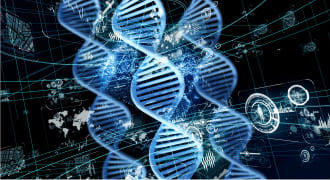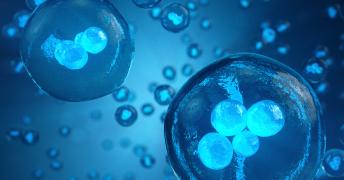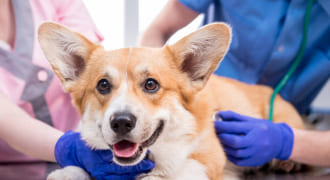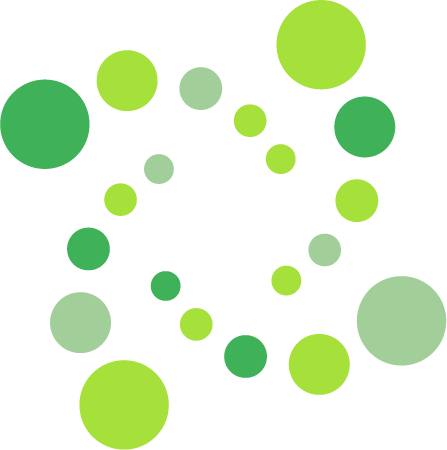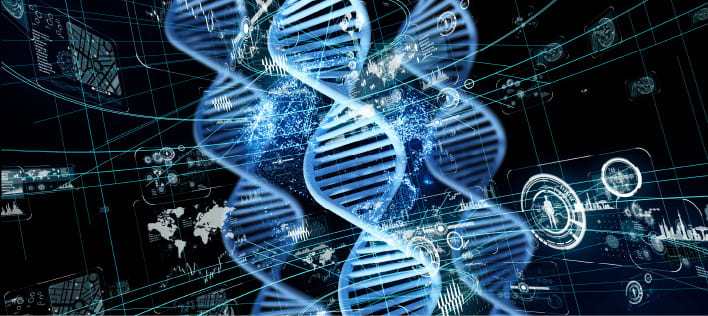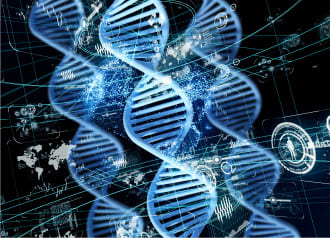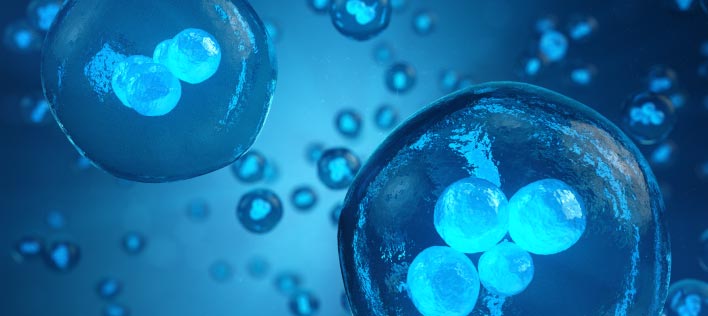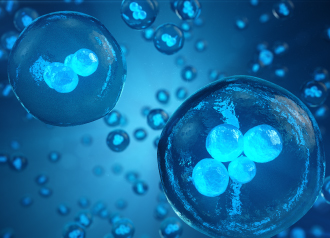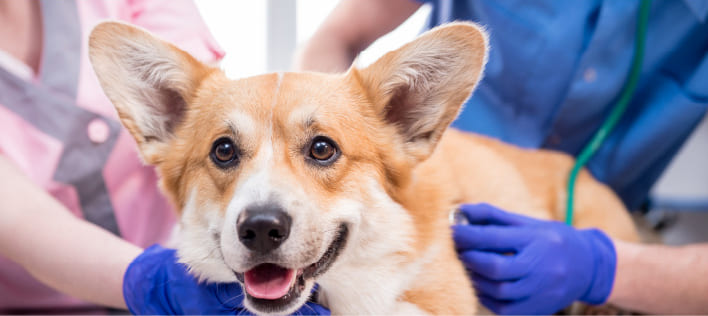Where is veterinary medicine now and beyond?
Companion animals such dogs and cats are now outnumbering children, and many new animals are welcomed into the family each year. The importance of medical care for animals is increasing year by year, and the number of pet insurance subscriptions has nearly doubled in five years. In fact, an increasing number of veterinarians are adopting advanced treatment methods that have been put to practical use on humans, and the number of medical examinations at university hospitals and specialized secondary medical facilities that are responsible for advanced medical care for animals is increasing by years. This reflects the size of the domestic market for animal health care continues to grow at an annual average rate of 5%.
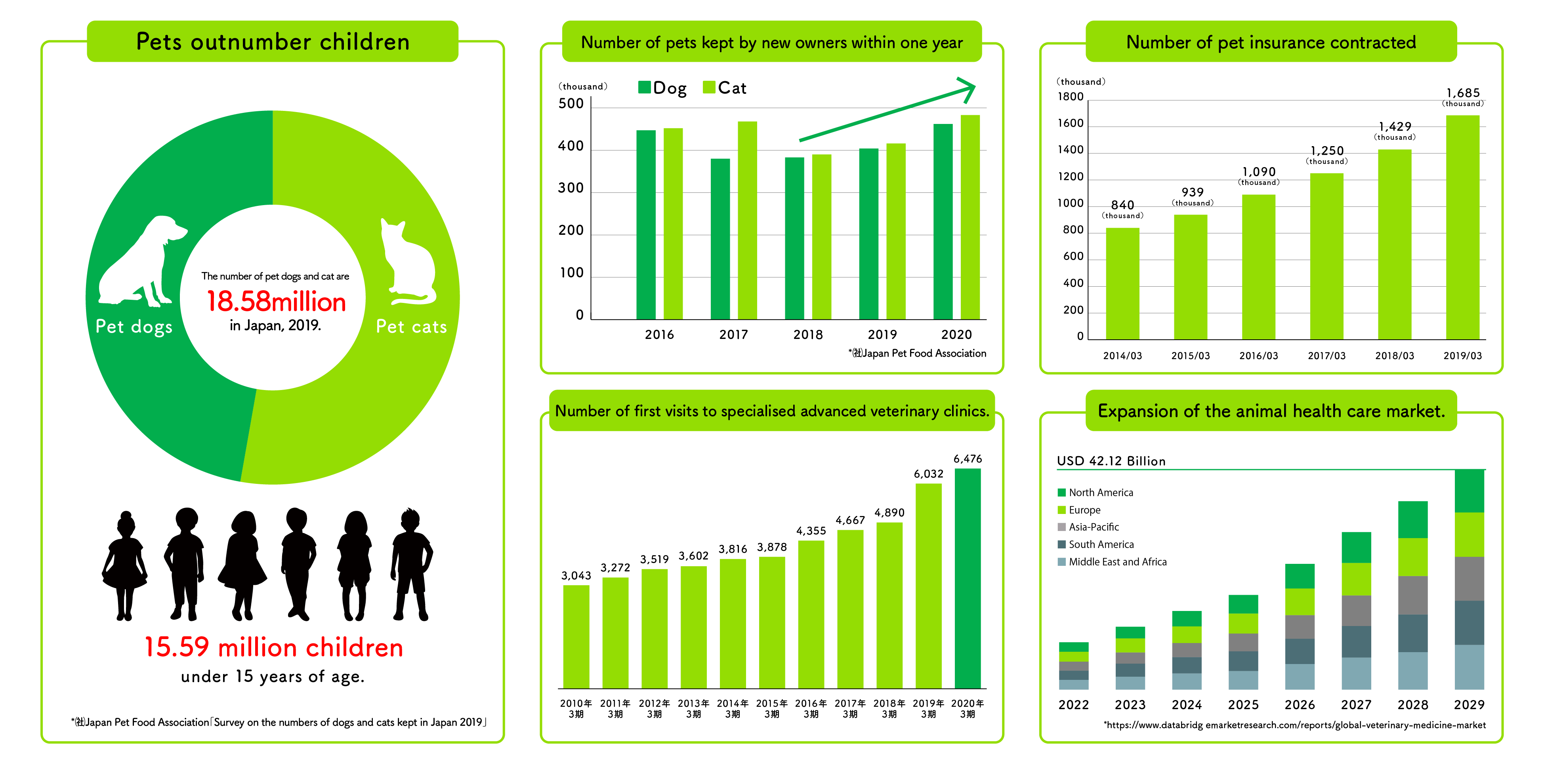
Under these circumstances, regenerative medicine for animals is progressing little by little. Through the efforts of some devoted veterinary hospitals, they have prepared advanced facilities within the hospital with their own funds, in order to prepare cells that can be used for treatment by making full use of complex cell culture methods cultivated through research (i.e., in-house preparation or in-hospital preparation). However, there are still many challenges such as “burden on the donor animal”. In order to collect fat that is the source of cells, the donor animal, which may be a sick or injured animal (autologous) or a healthy animal (xenogeneic) is put under general anesthesia in many cases. It must be collected by surgery, and a great physical burden is unavoidable. There is also the issue of “uniformity of quality”. Because culture methods might differ slightly from hospital to hospital, and differences in donor animals are also reflected in cell functions; hence, it is not always possible to obtain cells of the same quality. This makes it difficult to conduct controlled scientific verification of the efficacy and safety of treatments, and the effects are often overestimated or underestimated. Not to mention that the time needed upon the start of treatment. In the case of autologous cell transplantation, it generally takes time to prepare the cells, and treatment cannot be started immediately (this can be avoided in the case of allogeneic cell transplantation). And finally, the issue of manufacturing efficiency. When autologous cells are prepared in-hospital, each treatment is made-to-order. Even in the case of allogeneic cells, the number of cells that can be obtained from one individual is limited, and it is not easy to match the quality of cells for each donor.
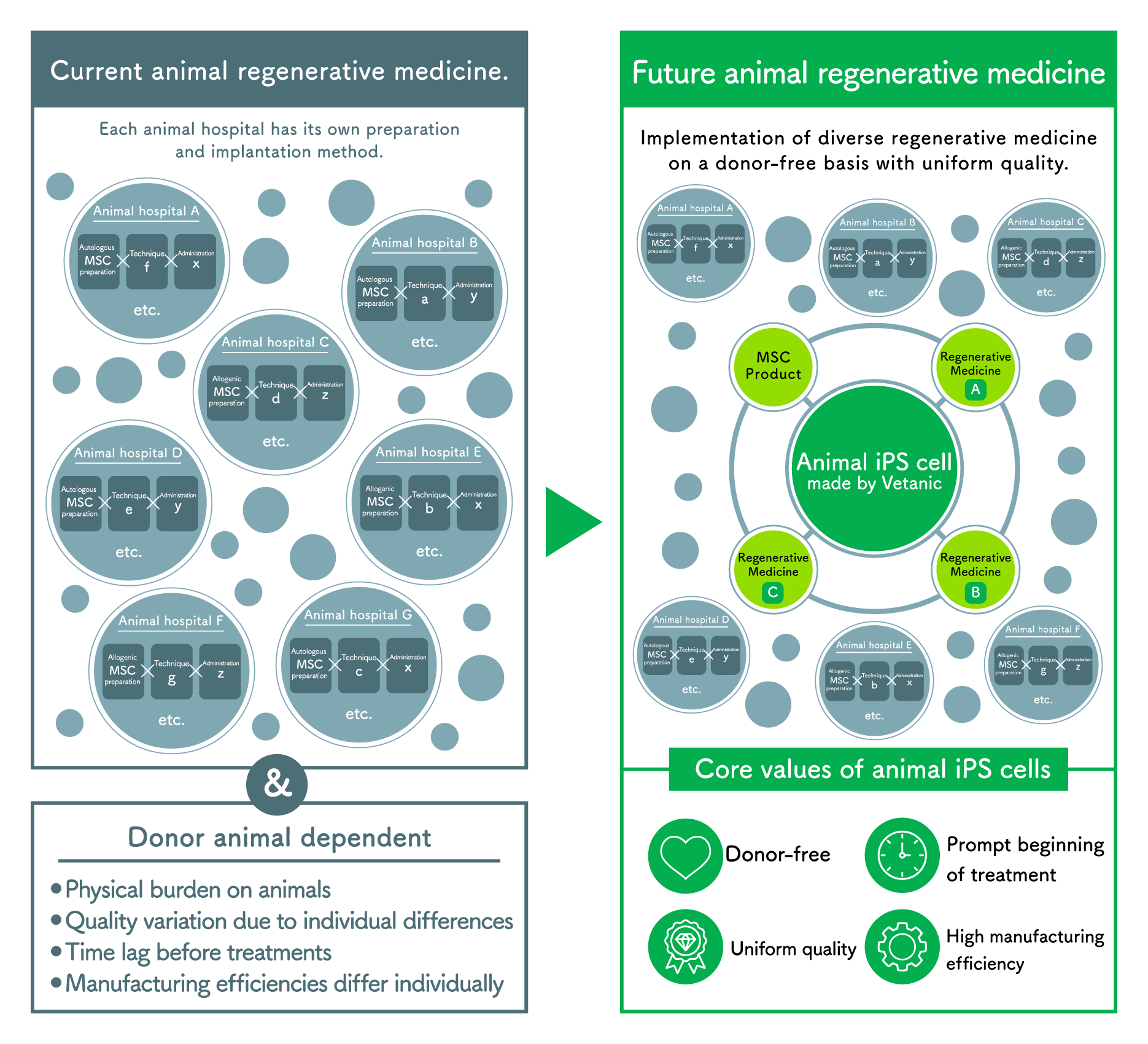
Vetanic believes that these challenges can be overcome by using iPS cells.
Once iPS cells are established, a large number of cells with the same properties can be obtained, and it is possible to manufacture regenerative medicine products with uniform, stable efficacy and safety. Using iPS cells as a raw material also eliminates the need for donors and avoids physical invasion of animals. In addition, it is possible to increase production efficiency by culturing large amounts of cells, and products made in this way can be stored under ultra-cryogenic conditions, so treatment can be started quickly when necessary. In other words, we believe that accessible regenerative medicine will be able to put into practice.
iPS cells are called totipotent cells and can be induced to differentiate into various cells. In addition, it is known that MSCs themselves not only have the potential to treat various diseases, but can also be differentiated into other cells. We believe that sustainable regenerative medicine can be put into practice by bring such diverse product development without imposing a burden on donors.
The regenerative medicine that Vetanic aims for is to make animal-friendly, accessible and sustainable animal regenerative medicine that is easy for families to use come true.
-
Autologous and allogeneic cell transplantation
Autologous cell transplantation is the transplantation of the patient's own cells. The characteristic benefit is that since it is your own cells, the risk of immune rejection is extremely low and the safety is high. On the other hand, once the treatment plan has been decided after a medical examination, cells need to be harvested from the patient and made it from the scratch; hence, it takes time before they can be used as a treatment.
Allogeneic cell transplantation is regenerative medicine that uses the cells of different individuals other than the patient. The characteristic benefit is that since it uses cells of other individual, it is possible to prepare a large number of cells in advance, a stable supply is also possible, and the cost is low. On the other hand, it is necessary to use cells that are less susceptible to immune rejection and to devise ways to make them less susceptible. It is sometimes used as a stop-gap treatment for autologous cells.


